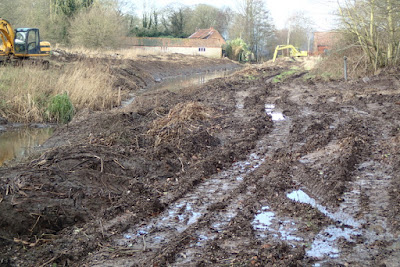As we hurtle headlong into an uncertain future leaving the natural world behind us in a thick cloud of pollution, we seem to have forgotten that we are only caretakers that have been entrusted with our little corner of England. As the county of my birth slowly disappears before my eyes I am driven to record as much of it as possible before it is gone forever.
In this seemingly endless period of change there is one bright spot. The North Walsham and Dilham canal. The canal is being restored as close to its original condition as possible.
I began filming the restoration work carried out by the Old Canal Company and the North Walsham and Dilham Canal Trust six years ago. In this time the progress has been nothing short of astounding.
The North Walsham and Dilham was opened in 1826, after an act of parliament was passed. But it fell into rapid decline after the last trading wherry left in 1934. The development of the railway and road transport sounded the death knell for the waterway. However, the canal is still officially a navigable waterway.
In the last twelve months alone the progress has been remarkable. Last summer (2015) the section between the lock and the bridge at Bacton Wood has been restored. It took from April to August to remove the trees that had colonised the banks and the vegetation that had choked the channel. Removing tree stumps and de-silting has transformed the area from an overgrown backwater into a tranquil waterway.
 |
| Spa Common facing Downstream |
 |
| Spa Common facing Upstream |
Throughout Autumn and Winter, in spite of a record rainfall the work has pushed on, driving all the way from Pigney's Wood to Swafield staithe. Already, regular visitors to this freshly restored length of the canal include deer, Kingfishers and the Little Egret.
 |
| Pigney's Wood |
In the Autumn the canal by Pigneys wood, overgrown with trees and brambles, was cleared and reclaimed. Heavy rainfall throughout the winter did little to stop the momentum although it did make conditions for working very challenging. I know this from my own experience, carrying forty five pounds of video equipment through several inches of mud to film the action.
 |
| Challenging conditions on Paston Way |
Along Paston Way to the old M&GN Railway bridge, the canal owners and volunteers pressed on with the restoration. Clearing decades of ivy and vegetation that had covered the bridge piers and the footpath.
 |
| Old M&GN railway bridge. |
 |
| Hauling Ivy and growth from the bridge. |
At Swafield staithe a giant Bamboo plant was removed along with a number of trees that were growing in the canal bed. After the vegetation had been cleared the banks between the staithe and the bridge were graded and profiled.
 |
| The canal at Swafield Staithe. |
 |
| Removing trees near Swafield bridge. |
The owner of the canal assisted by the volunteers of the trust have worked in all weathers and conditions to restore this priceless example of our history. There is still a great deal of work to be done and as more of the canal is restored more and more routine maintenance is required. Reeds need cutting, banks need mowing. Visitors to the canal cannot fail to be impressed by the progress to date, but very few realise just how much hard work and determination it has taken to get this far.
All the photographs in the blog are kindly supplied by Alan Bertram, a stalwart supporter and volunteer of the canal trust. Use the links below to follow the news and progress of the canal.
http://www.nwdct.org/
https://www.facebook.com/NWDCT?fref=ts